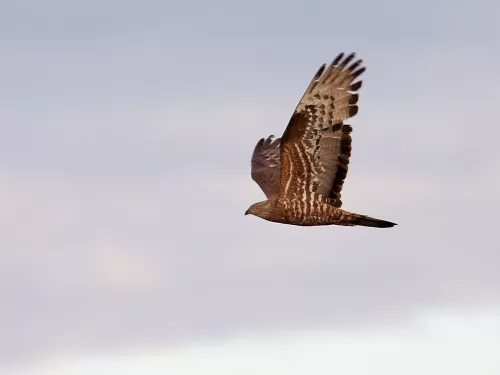Holly
Holly is a much-loved evergreen tree - its shiny, spiky leaves and bright red berries being a favourite in Christmas decorations. Found in all kinds of habitats, it provides an important winter food source for birds.
Holly is a much-loved evergreen tree - its shiny, spiky leaves and bright red berries being a favourite in Christmas decorations. Found in all kinds of habitats, it provides an important winter food source for birds.
Look out for the small Holly Blue in your garden or local park. It is the first blue butterfly to emerge in spring, and a second generation appears in summer. The caterpillars are fond of holly and ivy.
The Holm oak is an introduced species that has been widely planted near the coast and in parkland. It is self-seeding in the south of the UK. Its young leaves are spiny like Holly leaves, and it produces acorns.
The papery, translucent, silver 'coins' of Honesty are instantly recognisable. They are actually the leftover seed pods that dangle from the plant through winter.
Honeybees are famous for the honey they produce! These easily recognisable little bees are hard workers, living in large hives made of wax honeycombs.

Rare summer visitors, honey buzzards breed in open woodland where they feed on the nests and larvae of bees and wasps.
Ever spotted a honeycomb-like mound on the beach and wondered what it was? It's a reef built entirely by worms!
A true wildlife 'hotel', Honeysuckle is a climbing plant that caters for all kinds of wildlife: it provides nectar for insects, prey for bats, nest sites for birds and food for small mammals.
The hooded crow was thought to be the same species as the carrion crow, but they have now been separated. Less widespread than its cousin, look for it in North Scotland, Northern Ireland and the Isle of Man.
Well-known for its role in making beer, Hop is a climbing plant that can be seen in woodlands and along hedgerows and field edges. Its female flowers bear the cone-like fruit that is used in beer.
This bizarre bug can be found on plants in woodland rides and clearings.
The fearsome-looking hornet may not be a well-loved insect, but it is actually much less aggressive than the common wasp. It is also an important pollinator and a predator of species that feed on plants and crops, so can be a gardener's friend.